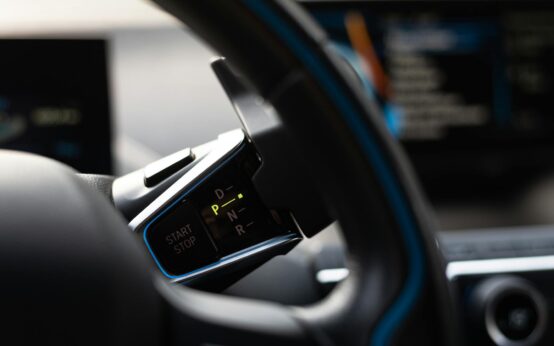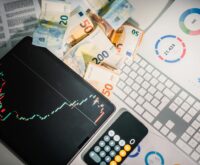The Unseen Engine: Why You Can’t Talk About AI Without Big Data
Let’s get one thing straight. Talking about artificial intelligence without mentioning its other half is like talking about a high-performance race car without mentioning fuel. It’s a pointless conversation. That inseparable other half, the high-octane fuel for modern intelligence, is big data. The relationship between AI and big data isn’t just a partnership; it’s a deeply symbiotic, co-dependent reality that is fundamentally reshaping our world, from the shows you binge-watch to the medical diagnoses that save lives. They’re not two separate tech trends. They’re two sides of the same revolutionary coin.
We often hear the terms thrown around, sometimes interchangeably, creating a fog of tech jargon. But understanding their connection is crucial. It’s the key to grasping why technology is advancing at such a breakneck pace. One simply cannot exist in any meaningful way without the other. Think of big data as a colossal, ever-expanding library containing every book ever written, in every language, along with every note, scribble, and coffee stain. It’s an impossibly vast source of information. AI, in this scenario, is the team of super-librarians who can read everything, instantly, understand the context, find hidden connections between an ancient scroll and a modern science paper, and then tell you exactly what you need to know. Or, even better, tell you the answer to a question you didn’t even know you should be asking.
Key Takeaways
- A Symbiotic Pair: AI and big data are not independent technologies; they are fundamentally intertwined. Big data is the fuel, and AI is the engine that processes it.
- The Feedback Loop: Better data creates smarter AI. Smarter AI can analyze more complex data and even help generate new, valuable data, creating a cycle of continuous improvement.
- Real-World Impact: This duo is already transforming major industries, including healthcare (predictive diagnostics), retail (personalization), and finance (fraud detection).
- Ethical Hurdles: With great power comes great responsibility. Challenges like data privacy, security, and algorithmic bias are critical issues that must be addressed as these technologies evolve.
- The Future is Data-Driven: The continued growth of data sources like IoT will only accelerate the need for and capabilities of AI, pushing us towards a more automated, intelligent future.
What’s the Big Deal? Demystifying the Duo
To truly appreciate the dance between these two giants, we need to look at them individually first. It’s like understanding the roles of a lead guitarist and a drummer before you can appreciate their killer riff. They’re great on their own, but together, they create something entirely new.
Big Data: The Digital Universe of Everything
Forget spreadsheets. Forget neat, tidy databases. That’s not what we’re talking about. Big data is a force of nature. It’s characterized by the famous ‘V’s’:
- Volume: The sheer scale is mind-boggling. We’re talking about petabytes, exabytes, zettabytes of information. Every single day, we generate quintillions of bytes of data from social media posts, online transactions, GPS signals, medical sensors, weather satellites, and countless other sources. It’s an ocean. A digital deluge.
- Velocity: This data isn’t just sitting there; it’s streaming in at incredible speeds. Think of the real-time data from stock markets, the constant flow of tweets during a global event, or the data coming from thousands of sensors on a modern airplane. It has to be captured and processed in near real-time to be useful.
- Variety: This is where it gets really messy and interesting. Big data isn’t just numbers in a table. It’s structured data (like a sales database), unstructured data (like emails, videos, and social media comments), and semi-structured data (like system logs). It’s a chaotic mix of formats, and finding patterns within this chaos is the central challenge.
On its own, this massive, messy, fast-moving pile of information is just noise. It’s a library with no card catalog and all the books thrown on the floor. It holds incredible potential insights, but it’s unusable for a human. That’s where the engine comes in.

Artificial Intelligence: The Thinking Engine
Artificial Intelligence is the broad field of creating machines that can perform tasks that typically require human intelligence. But for our purposes, let’s zoom in on a specific, powerful subset of AI: Machine Learning (ML). This is where the magic really happens with big data.
Machine learning algorithms aren’t explicitly programmed with rules for every situation. That would be impossible. Instead, you feed them vast amounts of data—our big data—and they *learn* from it. They identify patterns, correlations, and anomalies that no human analyst could ever hope to find.
- An ML model for image recognition is fed millions of labeled pictures of cats until it learns to identify a cat in a new, unseen photo.
- A fraud detection system is fed billions of transaction records, learning the subtle patterns of normal behavior so it can instantly flag something that looks suspicious.
- A recommendation engine is fed the viewing habits of millions of users to learn which movies people who like Movie A also tend to like.
AI, specifically machine learning, is the tool that transforms that chaotic library of big data into an organized, searchable, and predictive source of knowledge. It’s the brain that can make sense of the digital noise.
The Ultimate Feedback Loop: How AI and Big Data Elevate Each Other
Here’s the core of it all: it’s not a one-way street. It’s a powerful, self-perpetuating cycle. A virtuous feedback loop.
- Big Data Feeds AI: The more data an AI model has to train on, the more accurate and sophisticated it becomes. An AI trained on 10,000 medical scans will be okay. An AI trained on 10 million scans will be a world-class radiologist. Data is the experience that makes AI smart.
- AI Refines and Creates Data: As AI gets smarter, it can process more complex data. It can also help to clean, label, and structure raw data, making it more useful for other AI models. Furthermore, advanced AI, like generative models, can now create entirely new data—from synthetic medical images for training to realistic product descriptions for e-commerce sites.
Think about how Netflix works. Your viewing history (big data) is fed into their recommendation algorithm (AI). The AI learns your preferences and suggests new shows. When you watch (or don’t watch) those shows, you provide new data that makes the AI even smarter about what you like. The more you watch, the better the recommendations get. The better the recommendations, the more you watch. It’s a perfect loop.
Real-World Magic: Where AI and Big Data Are Making an Impact
This isn’t just theory. This dynamic duo is already at work, often behind the scenes, changing the fabric of our society and economy.
Healthcare’s New Frontier
The potential here is staggering. By analyzing massive datasets of patient records, genetic information, and medical imagery, AI is achieving things that were science fiction a decade ago. It can predict disease outbreaks by analyzing social media data and news reports. It can identify cancerous cells in medical scans with higher accuracy than human doctors. AI algorithms are helping to design personalized treatment plans based on a patient’s unique genetic makeup and lifestyle data, moving us away from one-size-fits-all medicine.
Revolutionizing Retail and E-commerce
Every time you shop online, you’re interacting with this system. Amazon’s recommendation engine is legendary. It analyzes your purchase history, what you’ve browsed, what other people like you have bought, and countless other data points to create a personalized store just for you. But it goes deeper. Companies use AI and big data to optimize their supply chains, predicting demand for products in specific locations to reduce waste and ensure items are in stock. They use it for dynamic pricing, adjusting prices in real-time based on demand, competitor pricing, and even the weather.
The Future of Finance
The financial world runs on data, and the velocity is insane. Humans can’t keep up. AI-powered systems are essential for detecting fraudulent transactions in real-time, analyzing millions of events per second to spot anomalies. Hedge funds use complex algorithms to analyze market data, news sentiment, and economic indicators to make split-second trading decisions. Even getting a loan has changed; lenders now use AI to analyze thousands of data points—far beyond a traditional credit score—to assess risk more accurately.
It’s not just about predicting the future anymore; it’s about actively shaping it. By understanding the deep currents within the ocean of data, organizations can navigate with more precision, creating outcomes that were previously left to chance.
The Challenges and Ethical Tightropes
Of course, this immense power isn’t without its risks. The road to a data-driven future is paved with some serious potholes we need to navigate carefully.
Data Privacy and Security
To fuel AI, companies and governments are collecting unprecedented amounts of personal data. This creates a massive target for cybercriminals. A data breach can expose highly sensitive information. This has led to regulations like GDPR in Europe, but the debate over who owns data and how it can be used is far from over. It’s a constant balancing act between innovation and the fundamental right to privacy.
The Bias in the Machine
This is one of the most critical challenges. An AI is not inherently objective. It learns from the data it’s given. If that data reflects existing societal biases, the AI will learn and often amplify those biases. For example, if a hiring algorithm is trained on historical data where men were predominantly hired for a certain role, it might learn to discriminate against female applicants. Auditing algorithms for fairness and ensuring training data is diverse and representative is a massive, ongoing effort.

The Skills Gap and Job Displacement
The world needs more people who can work with these technologies—data scientists, machine learning engineers, and AI ethicists. There’s a significant gap between the demand for these skills and the available talent. At the same time, there’s a legitimate fear about AI and automation displacing human jobs. While many routine, data-processing tasks may be automated, the hope is that this will free up humans to focus on more creative, strategic, and empathetic work that machines can’t do.
Conclusion
The story of AI and big data is the story of our time. It’s a tale of a brain and a body, an engine and its fuel. They are not two separate trends to watch; they are the conjoined twins of a technological revolution. Big data provides the raw, unrefined potential, the chaotic whisper of a million different stories. AI provides the intelligence, the focus, and the voice to turn that whisper into a clear, actionable narrative.
From the personalized ads we see to the scientific breakthroughs that will shape our children’s lives, this partnership is the engine driving us forward. The journey is full of incredible promise and significant challenges. But one thing is certain: understanding this symbiotic relationship is no longer optional. It’s essential for navigating the future that is already here.
Frequently Asked Questions
What’s the difference between AI, machine learning, and big data?
Think of it as a set of Russian nesting dolls. Big Data is the raw material—the vast, complex datasets. Artificial Intelligence (AI) is the broad field of creating intelligent machines. Machine Learning (ML) is a specific, and currently the most prominent, subset of AI that focuses on creating systems that learn from data. So, you use machine learning techniques to build AI applications that are fueled by big data.
Can you have AI without big data?
Technically, yes, but its capabilities would be extremely limited. Early AI (often called ‘symbolic AI’ or ‘good old-fashioned AI’) was based on hand-coded rules and logic. It didn’t ‘learn’ from data. While useful for specific, constrained problems (like a chess-playing program), it lacks the flexibility and power of modern, data-driven AI. For the kind of AI that is transforming our world today, big data isn’t just helpful; it’s a prerequisite.
What’s the first step for a business to leverage AI and big data?
The first step isn’t to hire an AI expert. It’s to get your data in order. Many businesses have a wealth of data but it’s siloed, messy, or inaccessible. The foundational step is to establish a clear data strategy: identify what data you have, what data you need, and build the infrastructure to collect, store, and manage it effectively. You can’t build a skyscraper on a swamp. You have to build a solid data foundation first, then you can start applying AI to build intelligent solutions on top of it.



 AI and Automation: The Future of Work is Here
AI and Automation: The Future of Work is Here  AI in Healthcare: Revolutionizing Medicine for Tomorrow
AI in Healthcare: Revolutionizing Medicine for Tomorrow  AI in Healthcare: Revolutionizing Medicine & Patient Care
AI in Healthcare: Revolutionizing Medicine & Patient Care  AI and Big Data: The Ultimate Power Couple Explained
AI and Big Data: The Ultimate Power Couple Explained  AI in Transportation: The Future of How We Move Is Here
AI in Transportation: The Future of How We Move Is Here  AI in Transportation: The Future of How We Move
AI in Transportation: The Future of How We Move  Dynamic NFTs: The Evolving Future of Digital Assets
Dynamic NFTs: The Evolving Future of Digital Assets  How Macroeconomics Drives the Crypto Market (2024 Guide)
How Macroeconomics Drives the Crypto Market (2024 Guide)  How to Set Up a Node: The Ultimate Guide
How to Set Up a Node: The Ultimate Guide  Crypto Arbitrage Trading: A Beginner’s Guide (2024)
Crypto Arbitrage Trading: A Beginner’s Guide (2024)  The Business of NFTs: How Top Brands Are Using Them
The Business of NFTs: How Top Brands Are Using Them  What Are ZK-Proofs? A Guide to Blockchain Privacy
What Are ZK-Proofs? A Guide to Blockchain Privacy